6 Zero Waste Moving Tips for Relocating Overseas
Moving internationally is a stressful task that makes it easy to cut corners and generate loads of trash. These 6 simple zero waste moving tips will help you plan ahead and pack smart to minimize garbage and save a lot of money.
In March 2018, shortly after my open-heart surgery, my little family moved overseas from the United States to Switzerland. While we had a heck of a lot going on navigating our move to a city where we barely spoke the local dialect, we were intent on minimizing our waste.
Moving from one home to another is a giant task that can create a ton of trash. No matter where you’re moving to or why, it’s usually a stressful time, which means it’s easy to cut corners and generate a lot of waste in the process. The current world we live in makes it challenging to do the right thing.
Concern for the environment aside, moving overseas is expensive! … especially if you need to furnish your home from scratch. But with a little determination and teamwork, you can save a whole lot of money and minimize your carbon footprint. Here are our 6 zero waste moving tips for relocating overseas that we used for our family of three. ** Stay tuned for chapter 2 where the zero waste moving adventure continues: We furnished our new home in Switzerland 100% secondhand! **
- Minimize: less is more
Unless you have a limitless budget, moving overseas really forces you to sort through your belongings and determine what is actually important and useful to keep. To start, moving our furniture and large items was out of the question because it was wildly over our budget and honestly just sounded exhausting (find out in our next blog post how we re-furnished overseas with 100% secondhand items!). Since I have moved 26 times in 30 years, I am accustomed to having few things and bringing the bare essentials with me. Still, it’s funny how quickly papers, books and gifts can pile up – especially having a toddler who receives gifts left and right! Packing is the perfect time to decide what stays and what goes. If there’s an item that I’m hesitant about keeping (“…but it was so expensive!”, “…but it was a gift!” ) I ask myself two main questions that help me determine whether or not I should keep it: ‘When did I last use it?’ and ‘Do I actually like it?’. If the answers are “more than a year ago” and “no”, then the item is off to find a new home.
Why is minimizing a zero waste moving tip? Having less stuff helps us realize what is actually meaningful in life and to attach value to experiences over things. When you choose quality over quantity, that is, keeping only the items you really need and use, you begin thinking twice about bringing new items in your life. When you let go of items that don’t serve you, you are also supporting the secondhand market, allowing others to use environmental resources that have already been used.
What about gifts? I am no longer afraid of re-gifting! When you’re moving overseas, there simply won’t be room to bring everything, and some items won’t make the cut. You’re going to receive a lot of gifts in your life and probably a lot of them won’t be your cup of tea. That’s okay. The person who gifted you did not want to add clutter and inconvenience to your life. In my book, it’s better to pass the item on to someone who really will love it rather than to have it sit in a closet for a decade. I am honest and considerate about the re-gifting. Of course, a pizza cutter is easier to re-gift than a personalized necklace with your initials engraved in it: use your common sense and tact to decide appropriately.
What about sentimental items? I am big on capturing memories, but I also realize that I am more than my possessions. There are certain things that it would be painful to part with, like my 25 diaries from my childhood, which are in my childhood home. Or the collection of stones from my pregnancy altar. As for the items that were passed down from my grandparents, I decided to keep several of my absolute favorites – especially the smaller items. But I don’t need every last sentimental item to feel connected to my grandparents – that’s what my diaries and memories are for. If you’re intent on keeping all these items in the family, consider offering them as meaningful gifts to family members.
- Keep recycling bins around your home
When you’re sorting through your belongings, keep several recycling bins or bags around the house. If you haven’t moved in a while, chances are you’re going to find old flyers, batteries, light bulbs, old toiletry bottles, and other recyclables. When you’re in a hurry to get everything packed and are moving from room to room, it can be easy to make a split-second decision and chuck an old lip balm container in the trash. Make your life easier by planning ahead and placing bins in each room within easy access.
- Donate or sell items that didn’t make the cut
Now that you have less stuff to lug around, you can donate or sell the items that didn’t make the cut! Items that are no longer of use to you can still be valuable to someone else. If you’re looking to make a little money, put your items up for sale on Craigslist or eBay. Otherwise, donate them directly to friends, family or the local thrift store like the Salvation Army or the PTA Thrift Shop if you’re a Chapel Hill local. Either way you are allowing environmental resources that have already been extracted to have a longer life and spare other resources from being exploited.
What about items that are too large to transport to charity? Many charities like the Salvation Army and the PTA thrift shop will pick-up the items for free. All you have to do is schedule a pick-up time.
What about items that are broken and no longer functional? Don’t send them to the dump straight away: look for secondhand stores like The Scrap Exchange where crafters and artists will gladly take them off your hands.
- Ask around for secondhand suitcases
Since we were moving overseas, shipping our furniture and few belongings didn’t make financial or logical sense. We decided to just bring the bare essentials by plane. During our past moves within the United States, we would go hunting for used moving boxes weeks before the move at grocery stores and cardboard recycling drop-offs. It’s also possible to rent boxes, but we love scavenging! 😉 But cardboard boxes weren’t going to be possible this time around.
We only had 2 large suitcases and we were clearly going to need more. So what’s the best way to get secondhand suitcases? Share your intention with the world! Within days of us mentioning to our family that we were on the lookout for suitcases, Dakota’s father found us two large suitcases at the thrift store (one was free, the other $1), and then Dakota’s family pitched in and collectively lent us 4 large suitcases! We had more than enough to pack up all our belongings.
The only item that created waste was our daughter Luna’s high chair. It was one of the only brand new items that was gifted to her and it was such a pricey and high quality item that we decided to take it with us – our gamble was that we wouldn’t find a secondhand one in Switzerland within days of arriving (which ended up being true). Without one, it’s really impossible to get Luna to eat or keep her “locked up” and safe while we unpacked. So, even though it ended up being protected with a ton of bubble wrap and tape (my heart ached at that), at least we didn’t go out and buy a brand new one that would use up even more environmental resources. We did what we could! (Find out how we got 90% of our baby gear secondhand prior to Luna’s birth.)
- Use clothes to wrap fragile items
This zero waste moving tip might seem like a no-brainer, but using clothes to wrap fragile items not only saves you from using bubble wrap or other plastic wrapping, but it also saves space. While we would usually also use old rags or old newspaper, we used items that were already coming with us since we were short on space. If you’re bringing breakable containers along with you, stuffing socks and undies inside them is good extra protection.
- Moving day: Pack homemade food & your water bottle
Perfecting this last moving tip is for true zero waste pros, which we are not. When you’re moving overseas, you have a lot of stuff to carry and a lot of running around to do (we had a 2h drive and 3 flights to catch with our toddler). Even though I went out of my way to prep our meals in advance to avoid food-packaging waste at the airport, it was tricky fitting those meals into my already charged carry-on. I ended up only bringing homemade food for Luna and buying packaged food at the airport for myself. Hey, I tried. At least I had my water bottle with me so I could fill it up prior to the flights. If you are super-organized and bring your own food from home, you could actually call the airline in advance and inform them that you will not be having their meals. Do what you can! Moving day takes a lot out of ya!
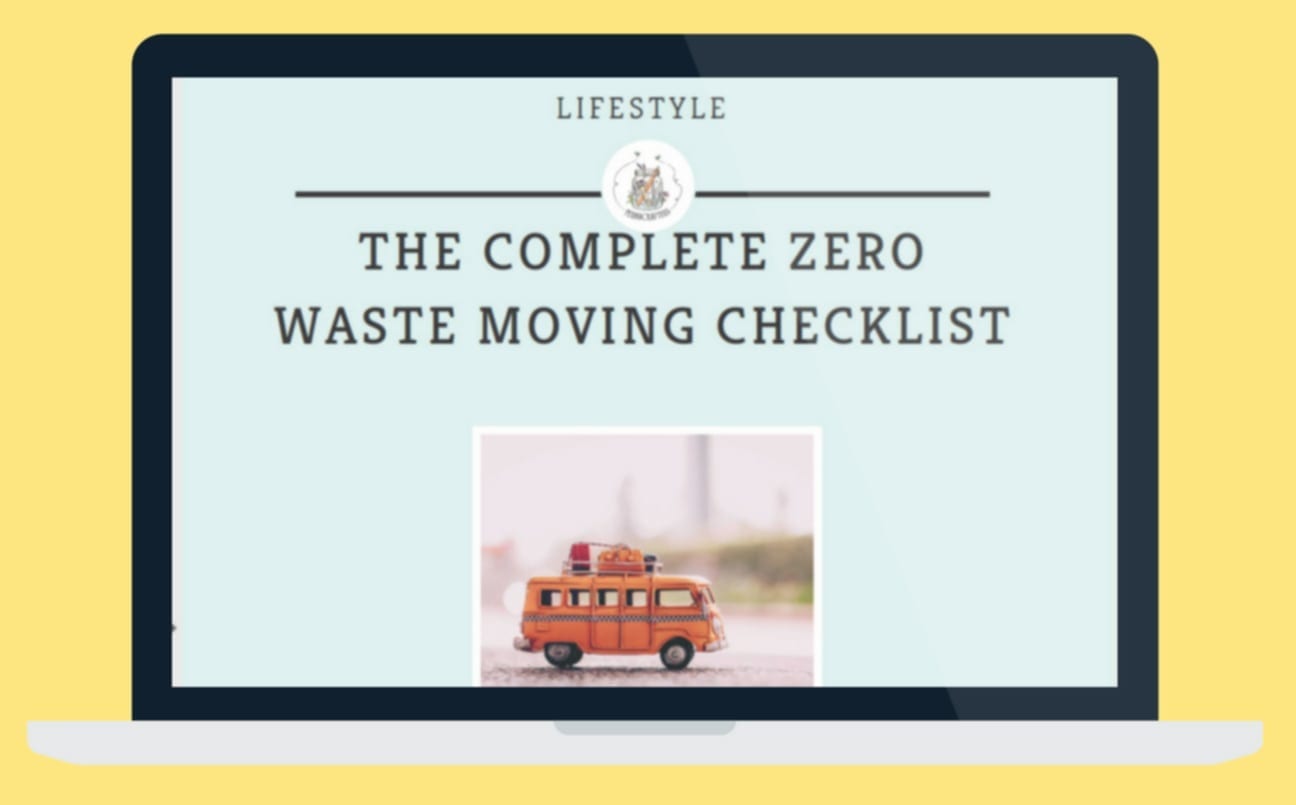
Are you looking for a Complete Zero Waste Moving Checklist?
Whether you are moving internationally or just down the street, here is your ultimate zero waste moving checklist to make sure you minimize waste at every turn!
Well, that’s it! Those are our 6 Zero Waste moving tips for relocating overseas. Of course, that’s not the end of the story. We also had to re-furnish our entire apartment zero waste! Stay tuned for next week when I share how we furnished our overseas home 100% secondhand (for the second time!).
Does this inspire you to plan ahead for your next move to generate less trash? We sure hope so! Let us know in the comments below if you have any other zero waste moving tips for relocating overseas. What worked or didn’t work for you?
Good luck with packing!
xoxo,
Christelle.
By commenting you accept our Privacy Policy.
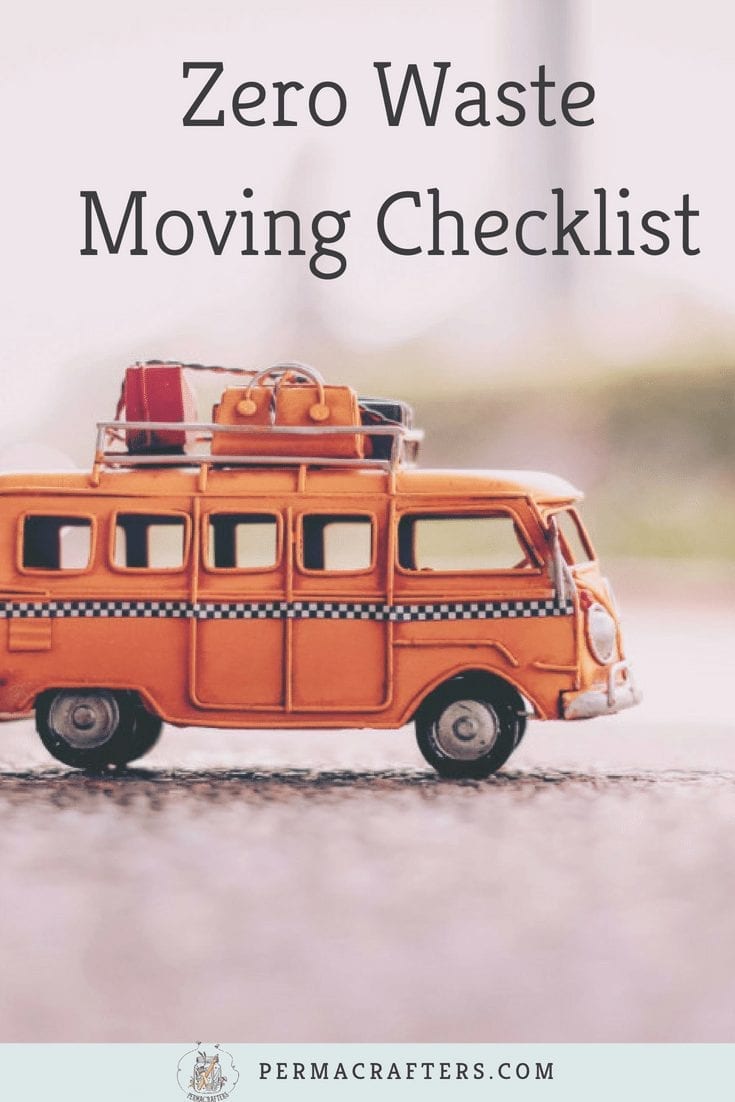
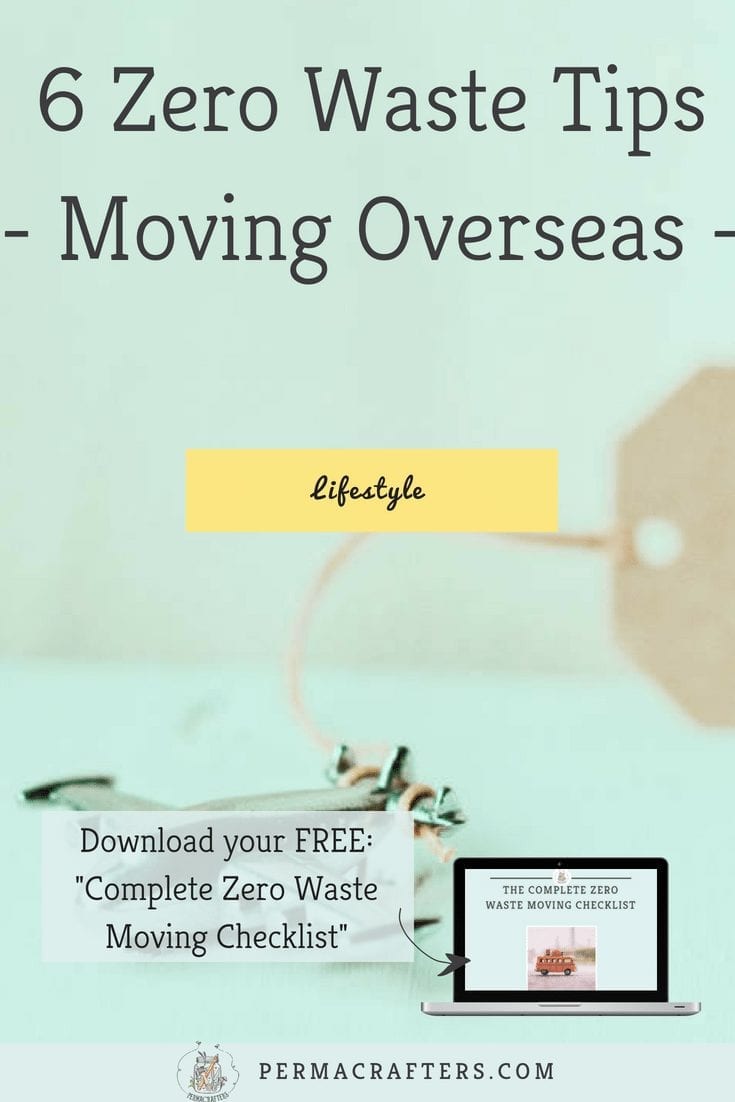
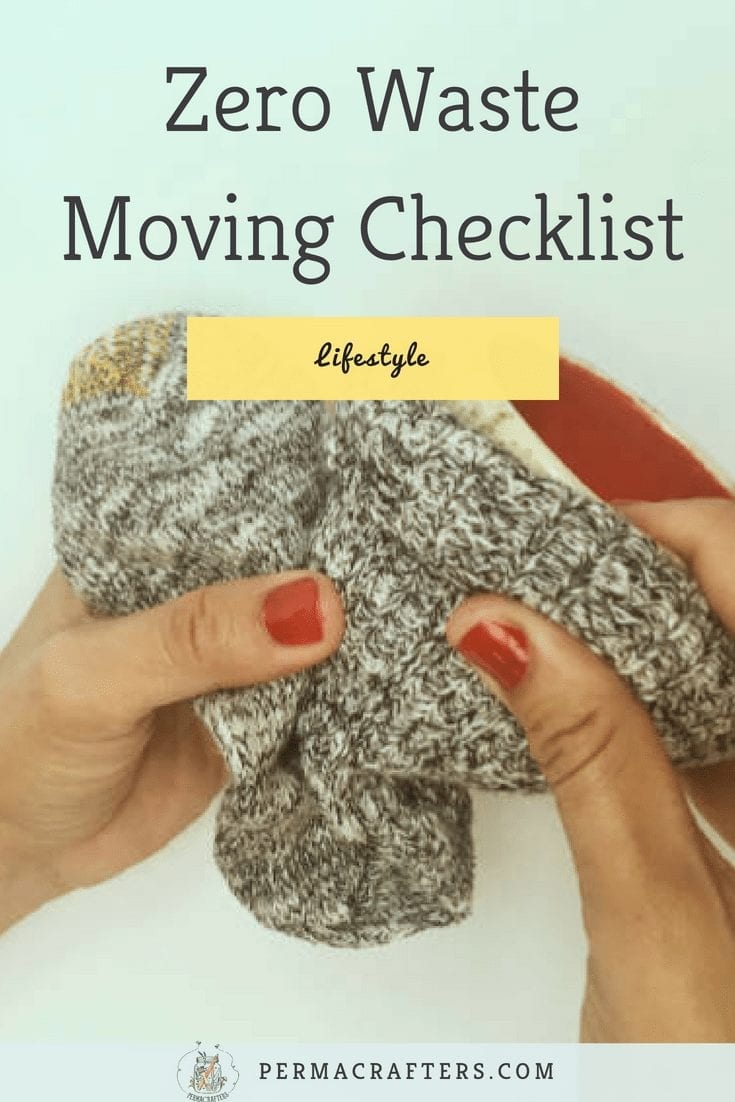

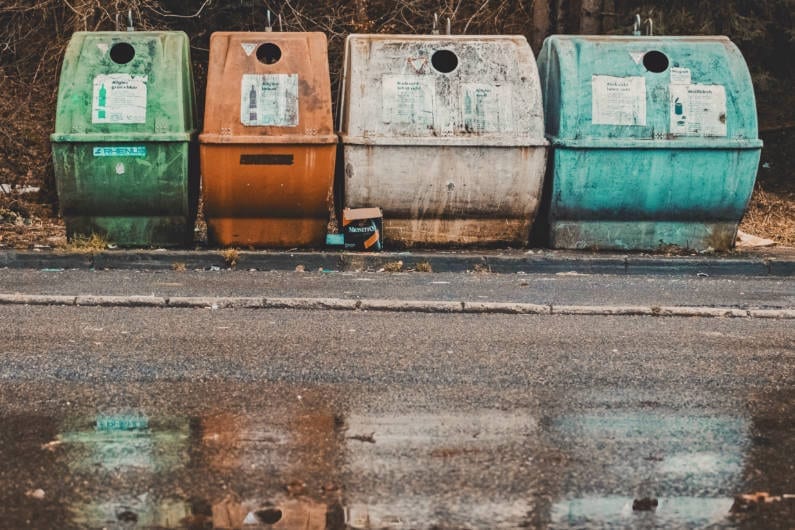
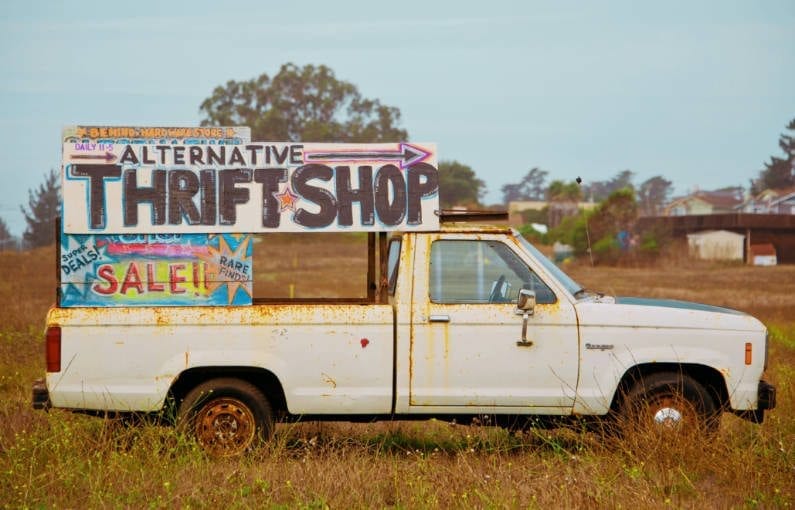
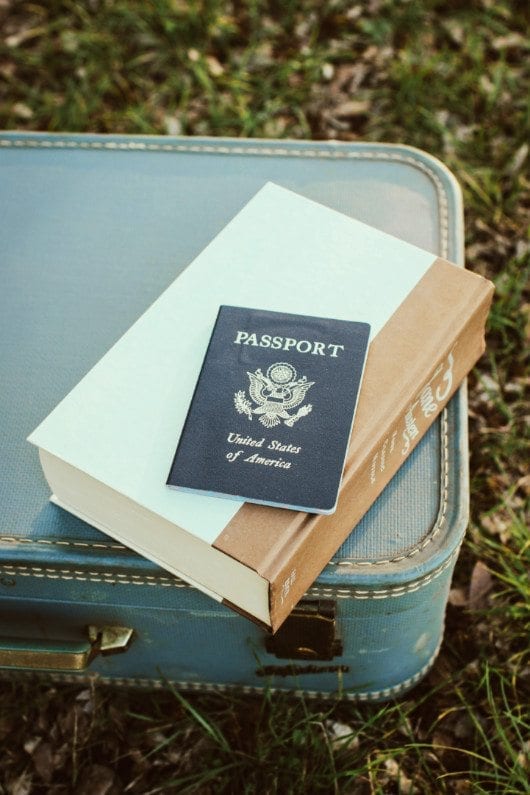
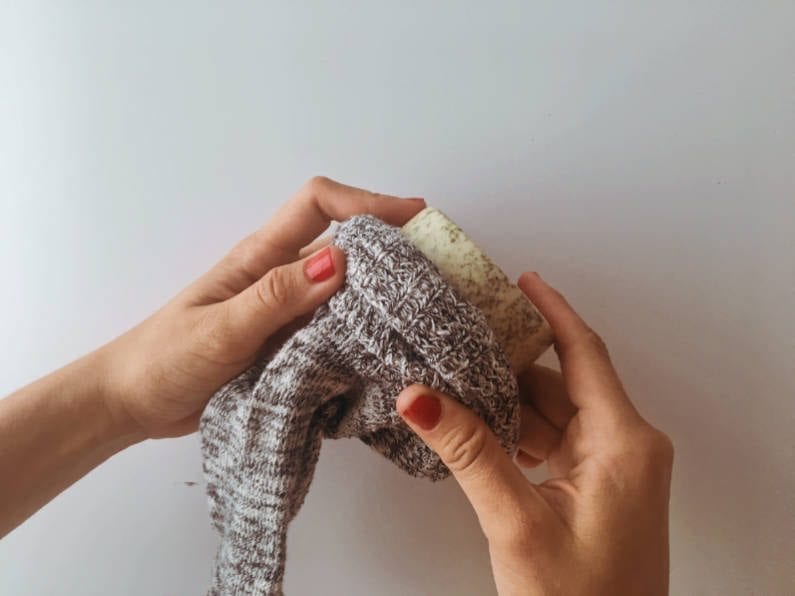
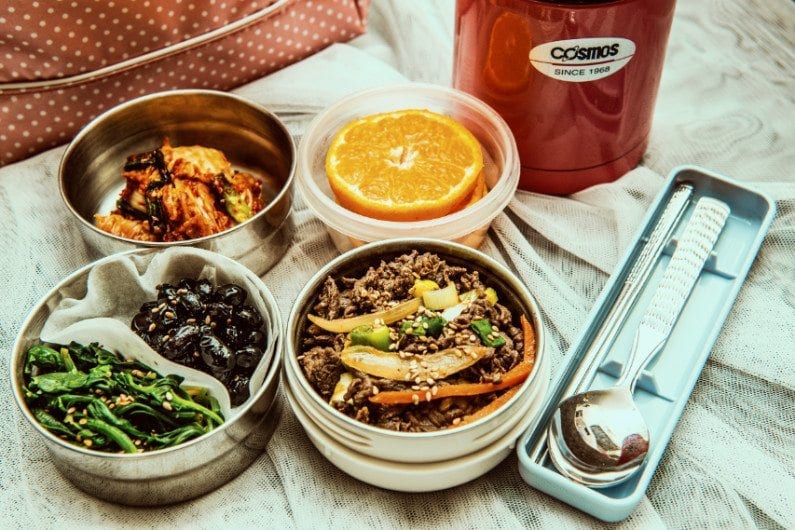

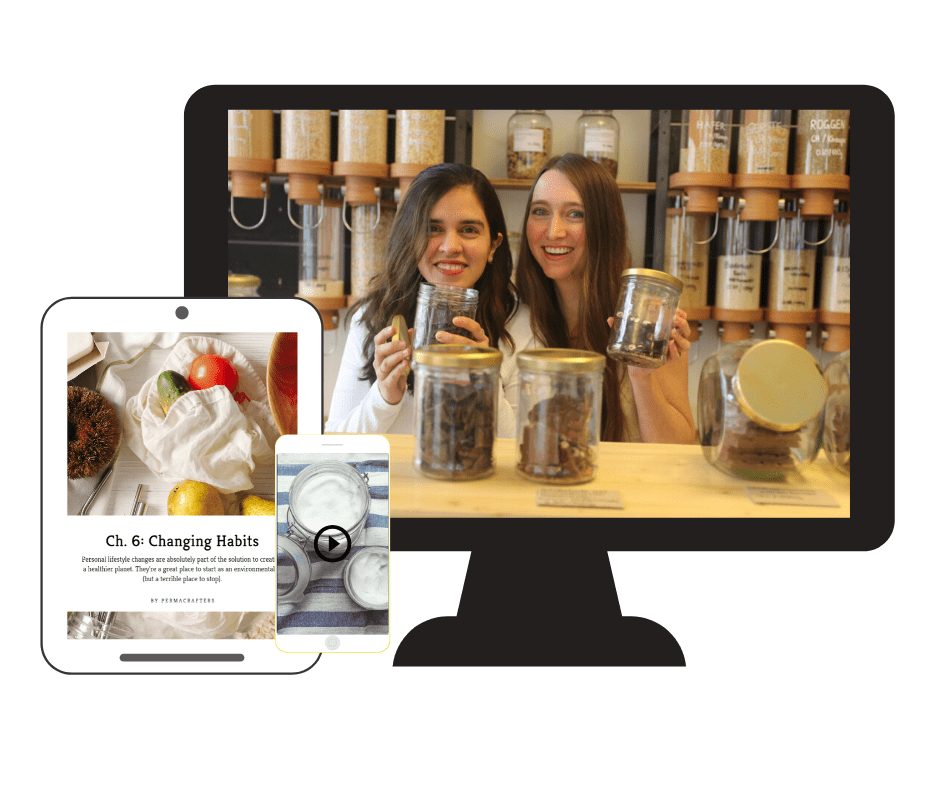
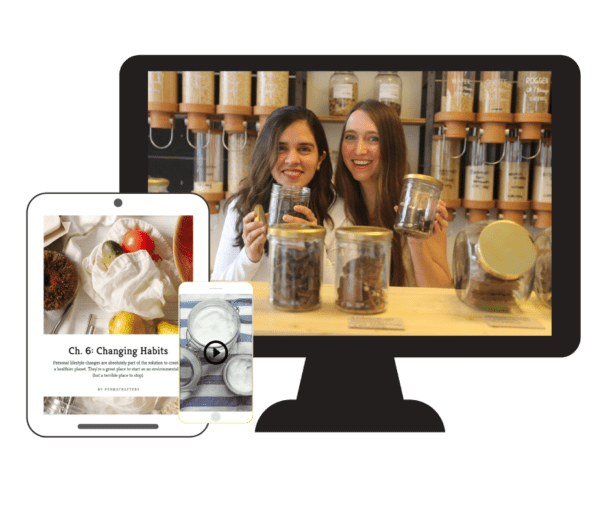
Excellent ideas and options for relocating in an environmentally friendly way. Also, it gave me some good pointers for just downsizing!
Yay! Glad you found it helpful.
Love this!!
Thanks Gilly 😀